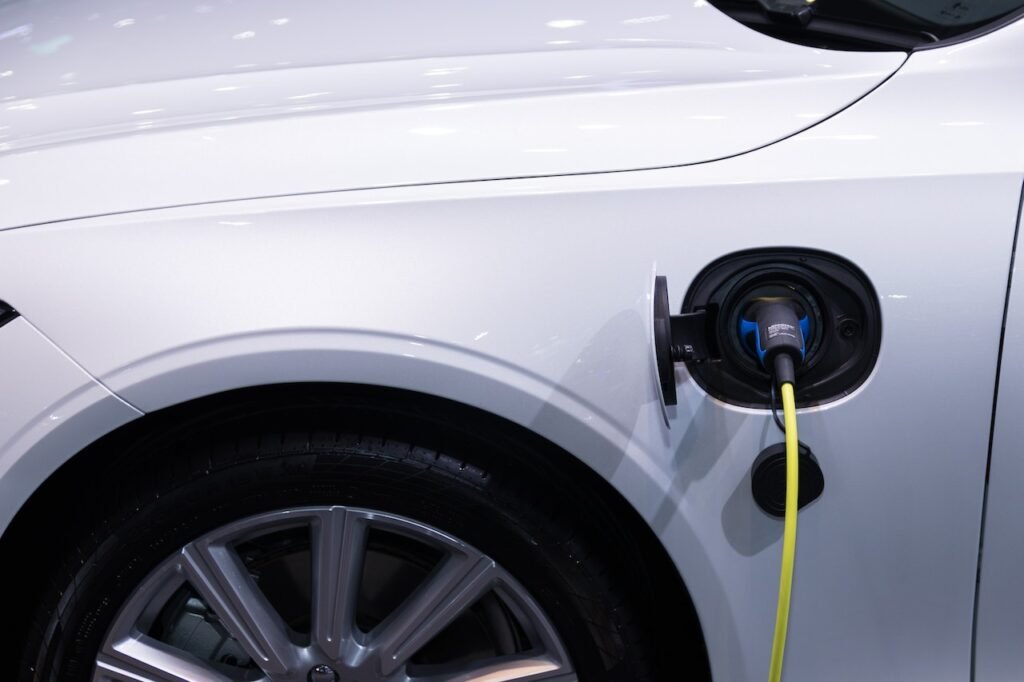THE FUTURE OF TRANSPORTATION: TRENDS AND TECHNOLOGIES SHAPING THE INDUSTRY IN 2023
Are you tired of being stuck in traffic and wasting hours of your day commuting? The future of transportation in 2023 promises to revolutionize how we move, from self-driving cars to high-speed hyperloop and beyond. Buckle up and join us for a journey into the exciting world of transportation trends and technologies shaping the industry.
KEY TAKEAWAYS
- Autonomous vehicles are developing quickly, and they have the potential to transform the transportation industry by cutting down on collisions, gridlock, and pollution.
- Electric vehicles are gaining popularity and are getting more inexpensive, and they are anticipated to rule the auto industry in the next years.
- By offering quicker, less expensive, and more sustainable alternatives to trains and aircraft, Hyperloop technology and other high-speed transportation solutions might completely transform how people travel great distances.
- By providing comprehensive and individualized mobility solutions, Mobility as a Service (MaaS) is an emerging trend that has the potential to transform the way we think about transportation.
- There is an increasing push towards more environmentally friendly and sustainable means of transportation as environmental concerns and sustainability gain prominence in the transportation industry.
- New technology and innovations are constantly used in public transportation systems to increase effectiveness, security, and convenience.
- The transportation industry must collaborate and innovate to meet the evolving needs of customers and the global economy.
INTRODUCTION
The transportation industry is always developing, with new technologies and trends shaping our move. As a result, the industry is on the cusp of major changes as we approach 2023, affecting everything from our daily commutes to international trade and logistics.
In this post, we will explore the newest trends and technologies shaping the future of transportation in 2023 and beyond. But first, a quick summary of the transportation industry and the relevance of discussing these trends and technologies.
In contemporary society, the transportation industry provides mobility and access to goods and services. The industry promotes economic development, social mobility, and cultural exchange via personal transportation and business logistics. Congestion, pollution, and safety issues are just a few of the industry’s challenges.
By discussing the newest trends and technologies, we may learn how the industry is changing and how to overcome these obstacles. We can also discover possibilities for innovation and cooperation that will define the future of transportation.
AUTONOMOUS VEHICLES
The transportation industry is going to change with the introduction of autonomous vehicles. Autonomous vehicles can drive themselves. These vehicles utilize sensors, cameras, and software to detect and judge their environment.
Numerous companies test autonomous vehicles on public roads. While the technology isn’t ready for widespread deployment, autonomous vehicles will soon be prevalent on our roadways.
The transportation industry is likely to be significantly impacted by autonomous vehicles.
Autonomous vehicles may reduce traffic, accidents, and pollution.
Autonomous Vehicles Benefit:
- Autonomous vehicles reduce human error-related accidents.
- Autonomous vehicles may reduce traffic congestion by optimizing routes and eliminating idle time.
- Finally, autonomous vehicles may help disabled or elderly drivers.
Disadvantages of Autonomous Vehicles
- Cost: One of the biggest disadvantages of autonomous vehicles is cost.
- Autonomous vehicles need technology, and it may take time for the cost to be low enough for widespread use.
- Data from autonomous vehicles might risk privacy and security if stolen.
- Legal and regulatory obstacles must be handled before autonomous vehicles may be employed.
Autonomous vehicles are the future of transportation, and although there are advantages and disadvantages, the advantages outweigh the disadvantages. As technology progresses, it’s only a matter of time before autonomous vehicles become prevalent on our roads, resulting in a safer, more efficient, and more accessible transportation system.
ELECTRIC VEHICLES
The adoption of electric vehicles is undergoing a significant transition in the transportation sector as the globe strives to minimize carbon emissions. Electric vehicles are powered by rechargeable batteries and emit zero pollutants, making them a desirable alternative to traditional gasoline-powered vehicles. The definition, present situation, advantages and disadvantages, expected effect, and potential challenges and concerns around electric vehicles will all be discussed in further detail in this part.

Photo: Rathaphon Nanthapreecha
Vehicles that are powered by rechargeable batteries rather than gasoline or diesel are known as electric vehicles (EVs). Electric motors propel the wheels, and the batteries may be refilled at a charging station.
Because of developments in battery technology and improvements in charging infrastructure, the adoption of electric vehicles has skyrocketed in recent years. The International Energy Agency estimates that by 2020, there will be more than 10 million electric vehicles on the road worldwide. More than 90% of all-electric vehicles are produced in China, Europe, and the United States.
Advantages:
- Zero Emissions: Electric vehicles do not emit any pollutants, making them a sustainable option.
- Reduced operating expenses: Unlike traditional gasoline-powered vehicles, electric vehicles offer lower running costs since they need less maintenance, and charging is less expensive than refueling.
- Quieter: Electric vehicles are substantially quieter than traditional ones, which may lessen noise pollution.
- Pleasant ride: Electric motors provide instantaneous torque, making for a quieter, more responsive driving experience.
Disadvantages:
- Short range: The low driving range of most electric vehicles might be a concern on longer journeys.
- Long Charging Time: Recharging an electric car takes much longer than recharging a traditional vehicle with gasoline.
- Initially more costly than traditional vehicles, this difference is expected to shrink as technology improves and demand grows.
- Fewer places to plug in your car: While charging stations are increasing, petrol stations are less common.
The transportation sector is expected to be impacted by the adoption of electric vehicles. The demand for traditional gasoline-powered vehicles is expected to fall as governments worldwide promote the adoption of electric vehicles. This might lead to the closure of gasoline stations and the loss of jobs in the fossil fuel sector. Renewable energy sources are expected to increase, which may lead to new jobs in the renewable energy industry.
Concerns and potential challenges:
- Although electric vehicles have numerous advantages, some concerns remain about their adoption.
- The availability of charging infrastructure, particularly in rural areas, is one of the main concerns.
- Disposing of batteries, which may harm the environment, is another concern. Some of the environmental advantages of electric vehicles may be canceled out by the energy required to produce batteries.
In conclusion, electric vehicles are expected to play a big part in the future of transportation. They have numerous advantages, but certain challenges and concerns need to be addressed. Governments and the corporate sector must collaborate.
HYPERLOOP AND OTHER SPEED TRANSPORTATION
Transportation requirements have increased as the globe grows more linked. As a result, new technologies are being developed to let people move more quickly and effectively than ever before. The hyperloop, a transportation system that has the potential to alter the way we travel completely, is one of the fascinating innovations. This section will examine the definition, present situation, advantages and disadvantages, anticipated effects, and high-speed transportation technologies.
Hyperloop is a transportation system that employs pods or capsules to travel via a network of tubes at high speeds. Elon Musk initially offered the notion in 2013, and since then, multiple companies have been working on developing the technology. The main idea is to use magnetic levitation to prevent friction between the pod and the tube and a vacuum-sealed tube from decreasing air resistance. One of the quickest forms of transportation, the pods are designed to travel up to 760 miles per hour.
Numerous companies, notably Virgin Hyperloop, SpaceX, and Hyperloop Transportation Technologies, are working on developing hyperloop technology. Virgin Hyperloop has already completed passenger test runs, and the business wants to operate a commercial system by 2030. SpaceX has built a test track in its California headquarters and developed the technology. Since 2013, Hyperloop Transportation Technologies has been working on developing the technology, and they have built a test track in Toulouse, France.
Hyperloop technology provides significant advantages over existing routes of transportation. One of the main advantages is speed. Travel times may be drastically reduced by using Hyperloop pods, which can move up to 760 miles per hour. Compared to conventional forms of transportation like automobiles and aircraft, the technology is also more energy-efficient. The system is also designed to be autonomous, decreasing human operator requirements.
Hyperloop technology has several disadvantages. Safety is one of the main concerns. It will function in the case of an accident since it is still in its infancy—the cost of running and maintaining the system and constructing the infrastructure for hyperloop technology.
The transportation sector might be significantly impacted if hyperloop technology is extensively implemented. Technology can transform travel by dramatically lowering travel times and making transportation more efficient. Also, the system is designed to be energy-efficient, which might reduce greenhouse gas emissions and alleviate the consequences of climate change.
Although hyperloop technology is one of the most intriguing advances in high-speed transportation, other technologies are being explored. The Maglev train, which employs magnetic levitation to travel at high speeds, is an example of such technology. Some nations, notably China and Japan, have already put the Maglev train into operation. The supersonic aircraft, which can travel up to 1,000 miles per hour, is another technology. Boom Supersonic and Aerion Supersonic are two companies working on developing supersonic aircraft for commercial use.
MOBILE AS A SERVICE
The concept of Mobility as a Service (MaaS) is changing the face of the transportation industry and integrating many mobility services into a single, comprehensive solution, including car-sharing, bike-sharing, ride-sharing, public transportation, and other mobility services. The concept, current state, advantages, downsides, prospective impact, and numerous challenges and concerns of MaaS will be covered in this article.
Customers may expect a seamless, integrated, and long-term mobility experience thanks to the concept of Mobility as a Service (MaaS). They are integrating many transportation services into a single platform, which may be accessed through a mobile application. MaaS is a comprehensive service that combines several forms of transportation, including car-sharing, bike-sharing, ride-sharing, public transportation, and other modes.
“MaaS” is still in its infancy but is gaining traction worldwide. Many countries have implemented the MaaS concept, which developed in Europe. For example, the Whim app is one of Finland’s most popular MaaS services. In addition, many countries have started adopting MaaS systems, including Japan.
Customers have a quick and easy transportation experience thanks to MaaS, which is one of its main advantages. MaaS platforms, which provide a single point of access to various modes of transportation, allow customers to plan their journeys and pay for them via a single application. This may save the time and effort required to plan and book transportation services, making it easier for customers to travel.
By encouraging public transportation and other environmentally friendly modes of transportation, MaaS may also contribute to sustainable transportation. MaaS may minimize traffic, air pollution, and carbon emissions by making it easier for customers to access numerous modes of transportation.
MaaS does offer numerous downsides, though. The prospect of huge businesses monopolizing the transportation industry is one of the fundamental concerns. In addition, MaaS platform forms pose the danger of limiting competition, customer alternatives, and data privacy.
MaaS might open up new markets for transportation companies. Transportation companies may get access to a larger customer base and increase revenue by marketing their services on MaaS platforms. This might encourage the growth of cutting-edge transportation services and technologies, resulting in advancements in the industry.
Some various challenges and concerns must be addressed despite MaaS’ potential benefits. Integrating different transportation services into a single platform is one of the greatest challenges. This necessitates coordination between different transportation providers, which might need to be improved.
Another challenge is the regulation of MaaS platforms. There is a growing need for rules to ensure these platform forms operate fairly and openly. This includes legislation protecting the protection of personal information, fair competition, and the rights of customers.
ENVIRONMENTAL CONCERNS AND SUSTAINABILITY
The transportation industry is taking steps toward greater sustainability as the world becomes more aware of the impact of transportation on the environment. In this section, we’ll discuss the current environmental concerns confronting the transportation industry, the steps to address them, and their expected impact on the transportation industry.
Greenhouse gas emissions from transportation are a key source of global warming. In addition to carbon emissions, transportation generates other harmful pollutants, such as nitrogen oxides, particulate matter, and volatile organic compounds. Both individuals and the environment feel the consequences of these pollutants.
The transportation industry is taking various steps toward sustainability to address these concerns. One of the most important steps is the transition to electric cars (EVs), which do not emit any emissions at the exhaust. This transition is already well underway, with some of the world’s biggest manufacturers investing heavily in EV technology.
Another key step is developing alternative fuels, such as biofuels and hydrogen fuel cells, which emit fewer emissions than traditional fossil fuels. The transportation industry is also researching alternative modes of transportation, such as bicycling and walking, and sustainable forms of mobility, like carpooling and public transportation.
The transition to sustainable transportation is expected to impact the transportation industry significantly. The market for electric vehicles and other sustainable means of transportation is expected to grow as more consumers want sustainable transportation options. In addition to increasing innovation in sustainable transportation solutions, this will improve competition among automakers and other transportation providers.
Even with the obvious benefits of sustainable transportation, certain obstacles and concerns must be addressed. One of the biggest obstacles is building the infrastructure required to support sustainable modes of transportation. This includes the infrastructure required to support electric vehicles and other alternative fuels, such as charging stations and fuelling stations, and the infrastructure required to support other sustainable modes of transportation, such as bicycle lanes and public transportation networks.
The price tag associated with sustainable transportation options is another source of concern. While the price of electric vehicles and other sustainable transportation forms is decreasing, they still tend to be more expensive than standard autos. Those with lower earnings may find it more challenging to locate sustainable modes of transportation.
The transition to electric automobiles, the development of alternative fuels, and the exploration of alternative modes of transportation are all key steps the transportation industry is taking toward greater sustainability. Despite the obstacles and concerns that must be addressed, the trend toward sustainable transportation will significantly impact the transportation industry in the next years.
CONCLUSION
In conclusion, several trends and technology promise to radically alter the transportation industry. First, introducing autonomous vehicles is projected to dramatically influence the transportation industry, with advantages like enhanced safety and decreased traffic congestion and potential negatives such as employment displacement and regulatory issues. Second, notwithstanding worries about range anxiety and battery disposal, the growth of electric vehicles also offers considerable benefits, including fewer emissions and operational expenses. Third, hyperloop technology and other high-speed transportation options may provide quicker and more efficient modes of travel, but their viability and potential downsides must be carefully studied. Fourth, mobility as a Service (MaaS) offers consumers a range of options and services specifically suited to their requirements and is also gaining ground as a holistic approach to transportation. Lastly, creating the transportation industry’s future will depend heavily on resolving environmental problems and encouraging sustainability. The transportation industry has the potential to become more efficient, convenient, and environmentally friendly due to these trends and technologies; nevertheless, more research, development, and teamwork are needed to fulfill this goal fully.




































Comment Template